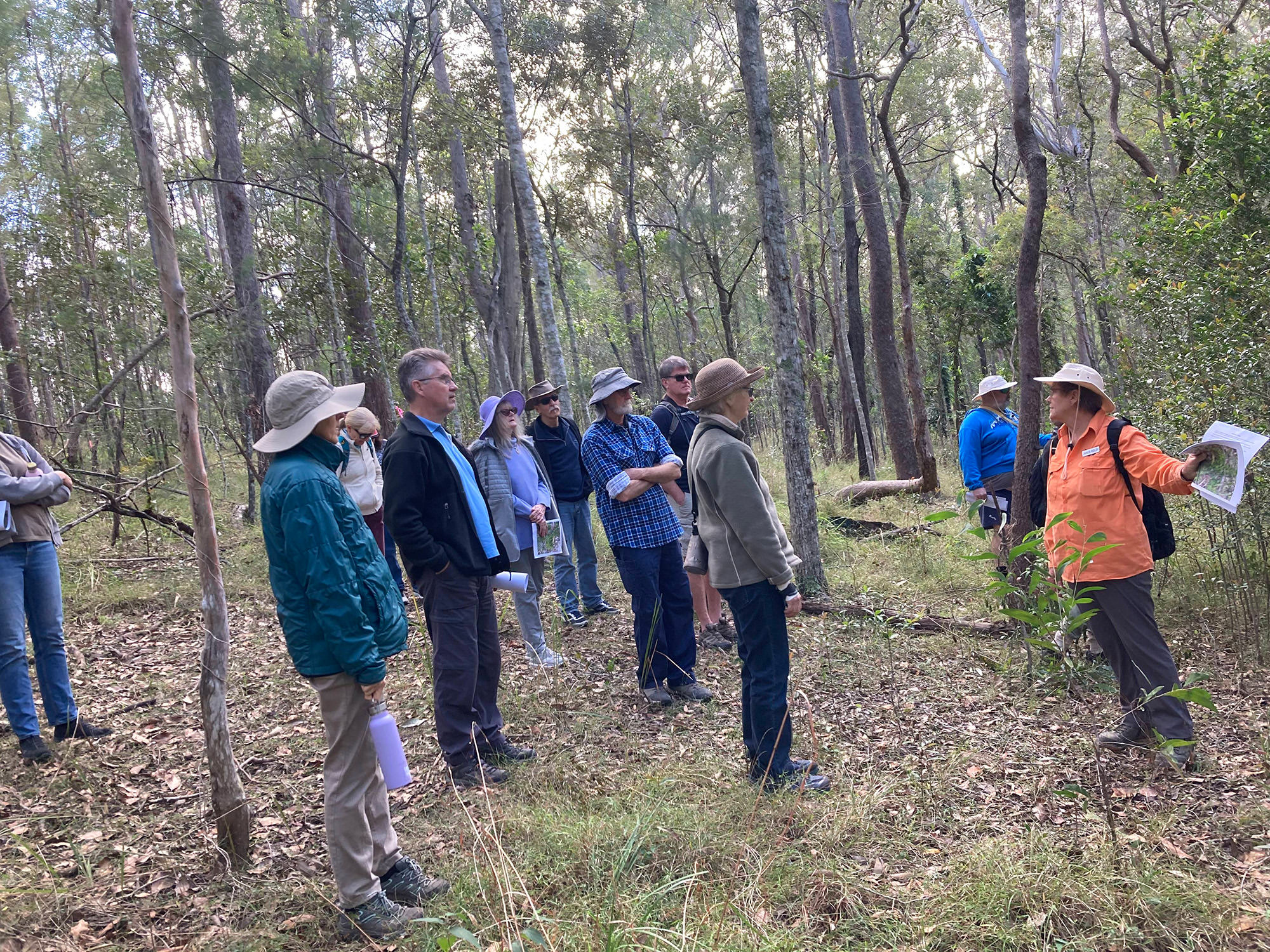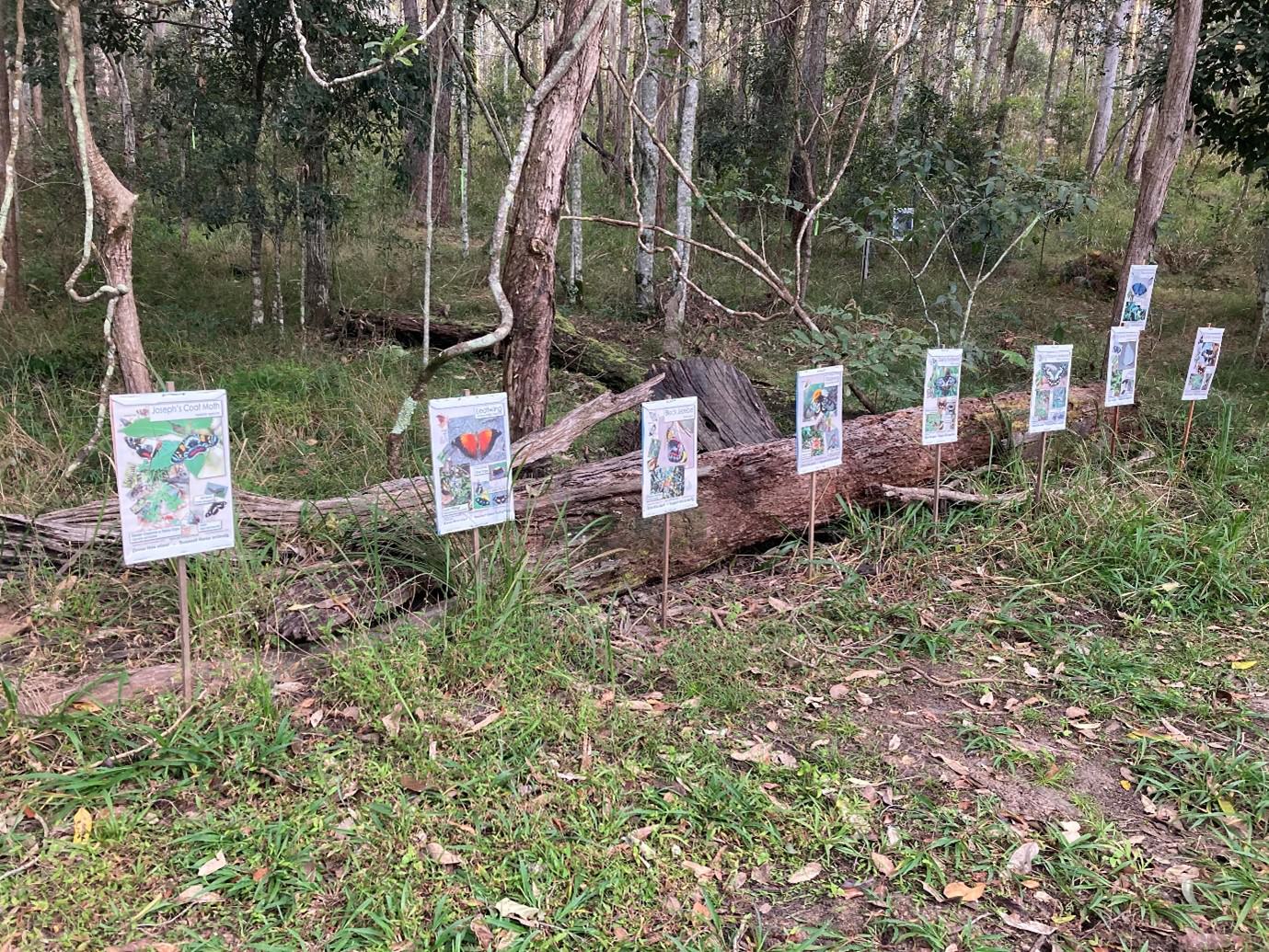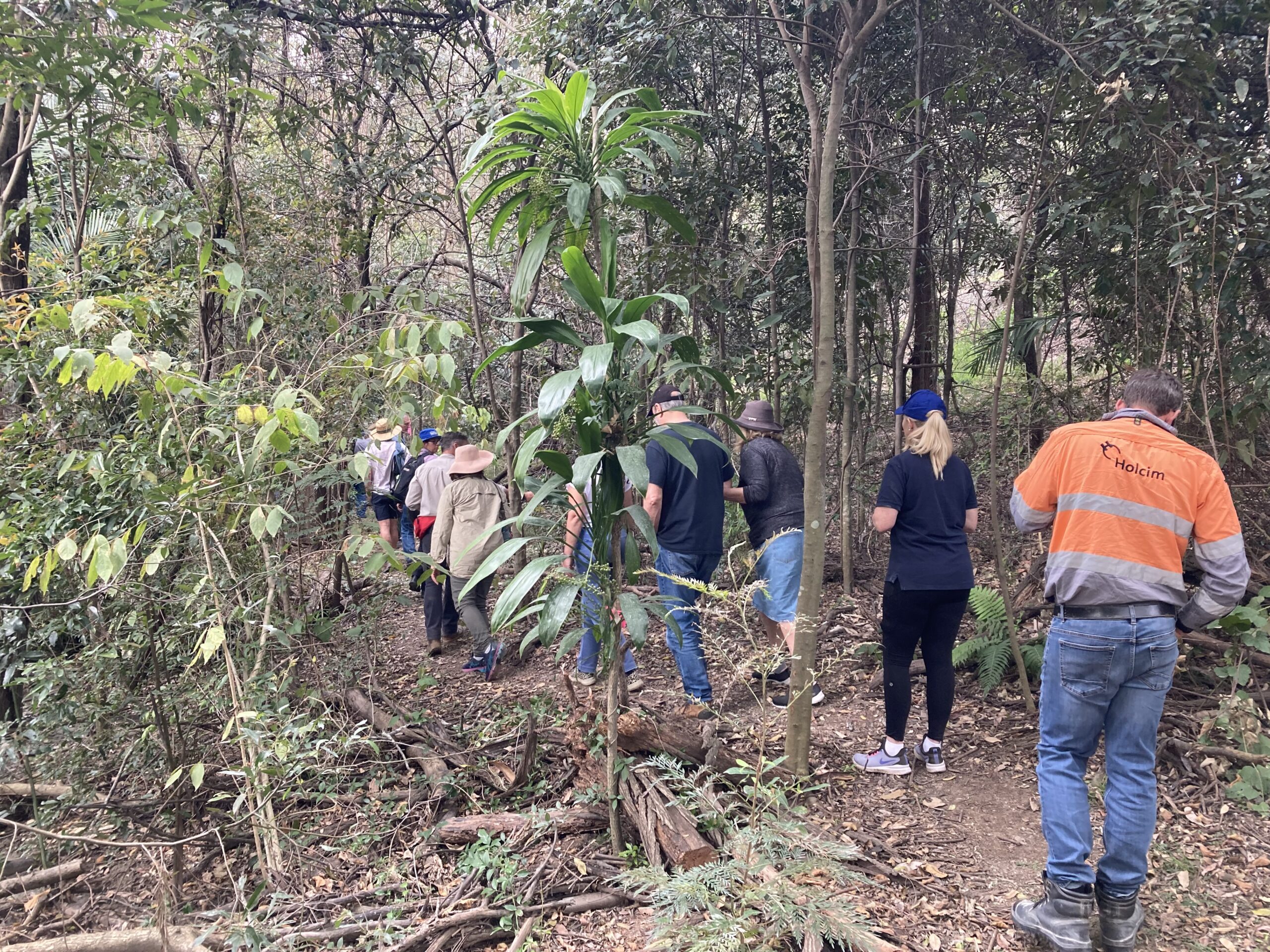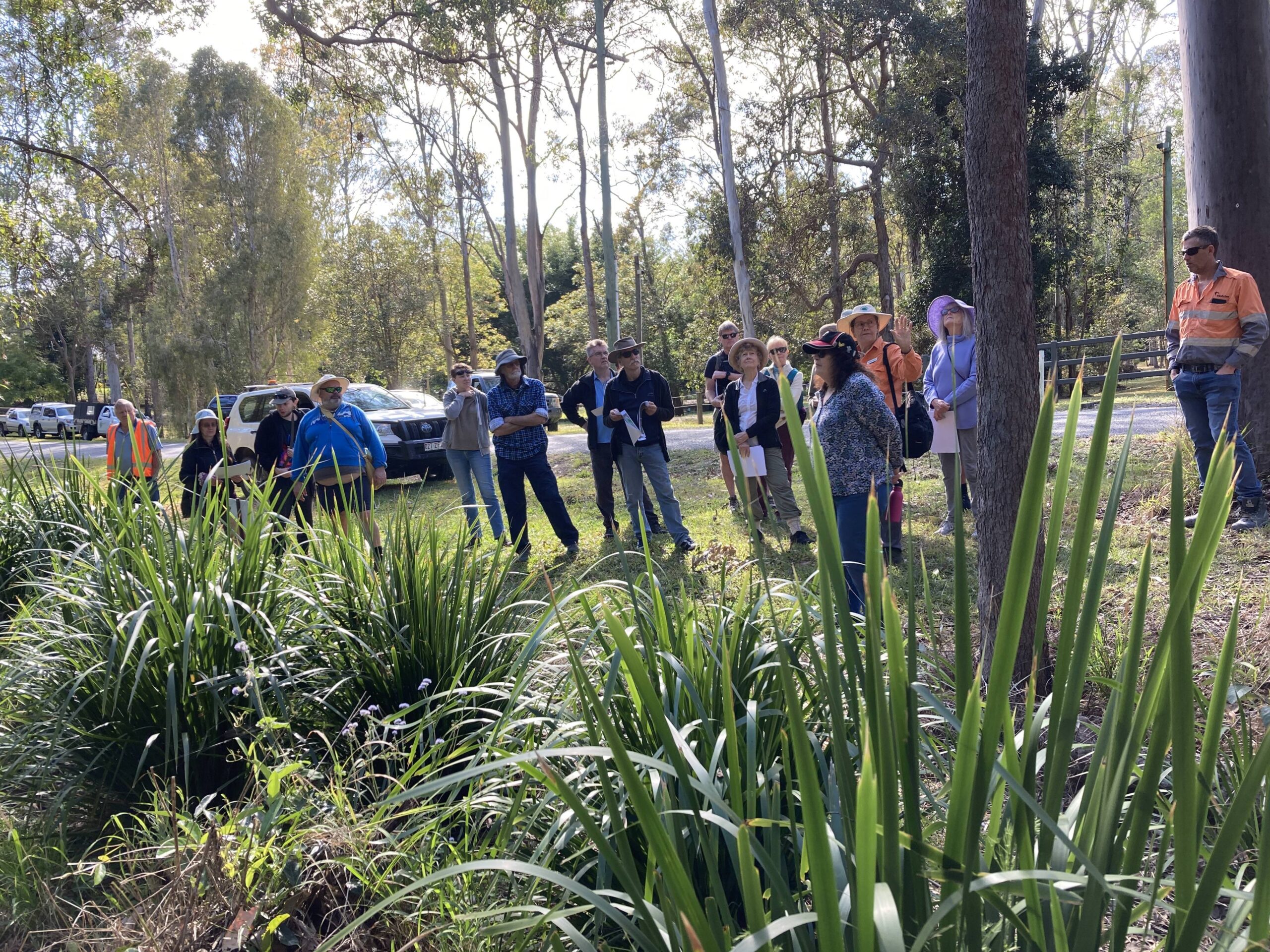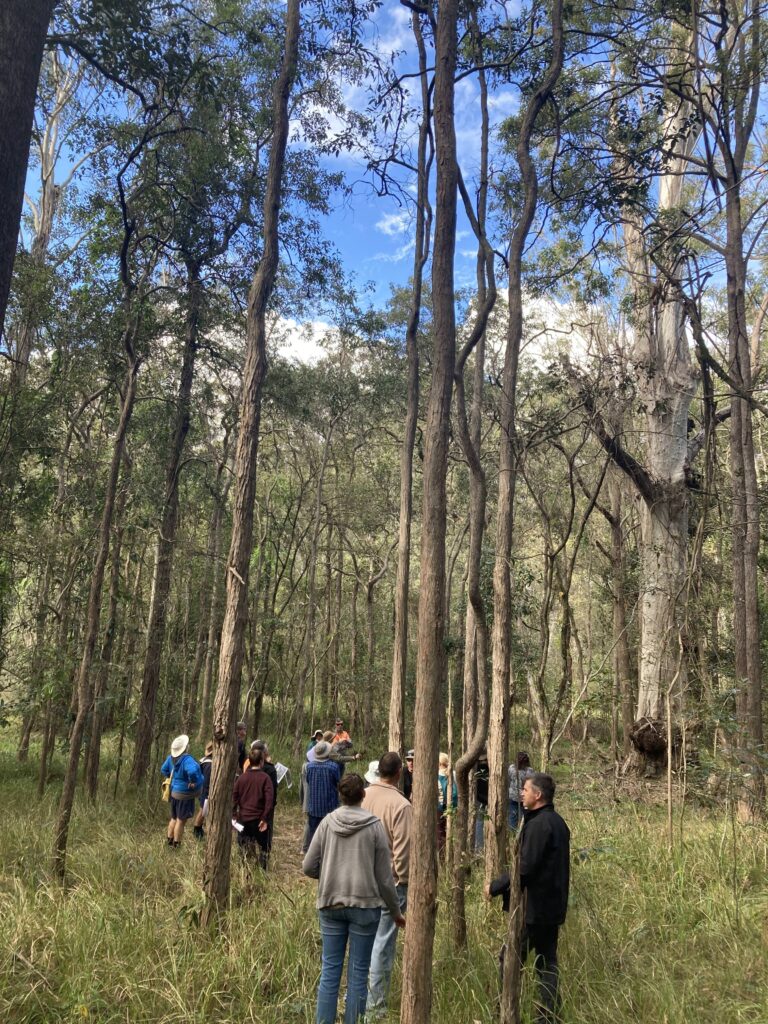 About ten years ago, a neighbour to the Holcim Quarry in Kurwongbah approached the management of the quarry to ask if there was a possibility of doing some weed management in the quarry grounds. The quarry manager supported this, and so began a unique partnership between community and industry, with mutual benefits for both groups. This innovative arrangement eventually led to the company registering 40 hectares of bushland under Holcim’s care with Land for Wildlife in 2015. With the help of a core group of volunteers, who have regular working bees to control weeds, record wildlife sightings and prevent erosion of the waterways, the site has truly transformed into a native bushland oasis.
About ten years ago, a neighbour to the Holcim Quarry in Kurwongbah approached the management of the quarry to ask if there was a possibility of doing some weed management in the quarry grounds. The quarry manager supported this, and so began a unique partnership between community and industry, with mutual benefits for both groups. This innovative arrangement eventually led to the company registering 40 hectares of bushland under Holcim’s care with Land for Wildlife in 2015. With the help of a core group of volunteers, who have regular working bees to control weeds, record wildlife sightings and prevent erosion of the waterways, the site has truly transformed into a native bushland oasis.
Already a dedicated volunteer of Moreton Bay Regional Council’s Bushcare program, Janice Ridley slowly built a relationship with successive managers of the quarry site. Site managers came and went over the years, but all were supportive of removing environmental weeds and supporting natural regeneration of the buffer zone surrounding the quarry operations site. (Most quarries are required to retain ‘buffer’ vegetation in order to mitigate air quality and visual impacts from quarry operations).
Holcim went a step further. They prepared a weed management plan and engaged a well-regarded local bush regeneration contractor (Alan Carter) to aid Janice with some of the more arduous tasks. They sponsored Janice and fellow bushcarer, Janet Mangan, to purchase a set of butterfly posters to help educate and encourage the local community to plant host plants on their properties. Furthermore, Holcim also provided the printing for a local environmental weed information fact sheet called Weeds of Whiteside / Kurwongbah.
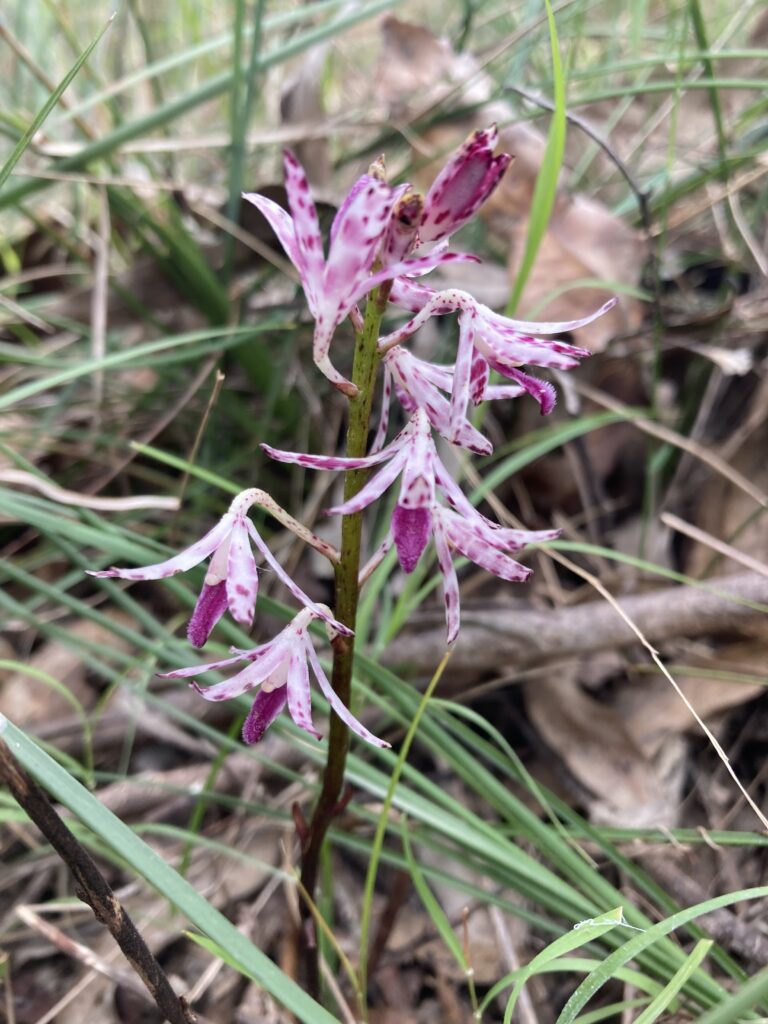
Moreton Bay Regional Council wanted to showcase the work done by Holcim, and with Janice and her band of volunteers, council held two workshops at the quarry in August 2022, attended by 55 Land for Wildlife landholders. The event was hosted by Holcim Quarry’s Site Manager, Bob Boss.
Workshop attendees were first taken to an extensive Eucalyptus woodland with superb ground cover. After ten years of spot spraying and hand weeding, the ground cover has resulted in a picture of native grasses. Amongst the Kangaroo and Barbed-wire Grasses are native lilies and a plethora of groundcovers. Attendees were lucky to see colourful ground orchids, yellow buttons and native violets. Council Environment Officer, Stefan Hattingh, gave a talk on the value of the large habitat trees with one having over a dozen hollows, which are home to microbats, cockatoos, reptiles and owls. The tree acts as a ‘time share’ apartment block, with some animals sharing the same space over the span of the seasons. Careful clearing of the weeds in this area gives the next generation of hollow-bearing trees the opportunity to also be a fauna hotel one day.
The second site highlighted what happens when the weeds that smother everything are carefully removed. Originally covered with Creeping Asparagus, Lantana, Singapore Daisy, Snake Weed and other nasties, the area now showcases successful native regeneration. Weeds were left in situ to break down and herbicide use has been restricted to assist the natural regeneration that is possible on such a resilient site.
Now, ten years later and under a canopy of Eucalyptus species, the site is home to a smorgasbord of native trees, shrubs and vines. Importantly it’s now a natural breeding ground for native butterflies with many host plants. The only planting in this area has been Lomandra hystrix and L. longifolia, a variety of sedges and some Broad-Leaved Paperbark (Melaleuca quinquenervia) trees around a small waterhole, which is part of an ephemeral wetland.
Our third site of the day was a gully once over-run with Singapore Daisy, Broad-leaved Pepper, Easter Cassia, Camphor Laurel, Chinese Elm and many more weeds. This is the one site where planting, not just natural regeneration, was deemed appropriate. Selected areas within the environmental weeds were cleared and the pepper and camphor trees were drilled over several years. This allowed for a gradual transition from weed-infested gully to what is now developing into a beautiful rainforest area. Hundreds of native rainforest tubestock, some Acacia and occasional Koala habitat trees have been planted.
All green waste has been processed back into each site where possible and allowed to decompose naturally. Hand or mechanical removal of weeds many months after herbicide treatment makes this work much easier.
The Holcim – Volunteer partnership is not a common story, but neither did it just happen. Many years of exchanging ideas on how to best tackle the natural resource issues present on the site, flexibility, and genuine compromise by both parties led to the site’s current condition. And as with most good stories, it started with someone who had a great idea.
Moreton Bay Regional Council would like to acknowledge Holcim’s commitment to bush restoration and the support they provide Janice at their quarry in Kurwongbah, and for being part of the Land for Wildlife family. They have shown that Industrial Landcare can espouse so many positive environmental and social outcomes.
A fitting bookend to this story is that at the end of the workshop, as we were closing the gates, we saw a Koala near the entrance to the quarry. We took photos, logged it on iNaturalist, and closed the gates with the wholesome feeling that this little patch of bush is well-cared for and increasingly home to many native critters.
Article by Adam Richardt (Team Leader, Conservation) and Janice Ridley (North Pine Bushcare Group)
Moreton Bay Regional Council
Photos by Adam Richardt

